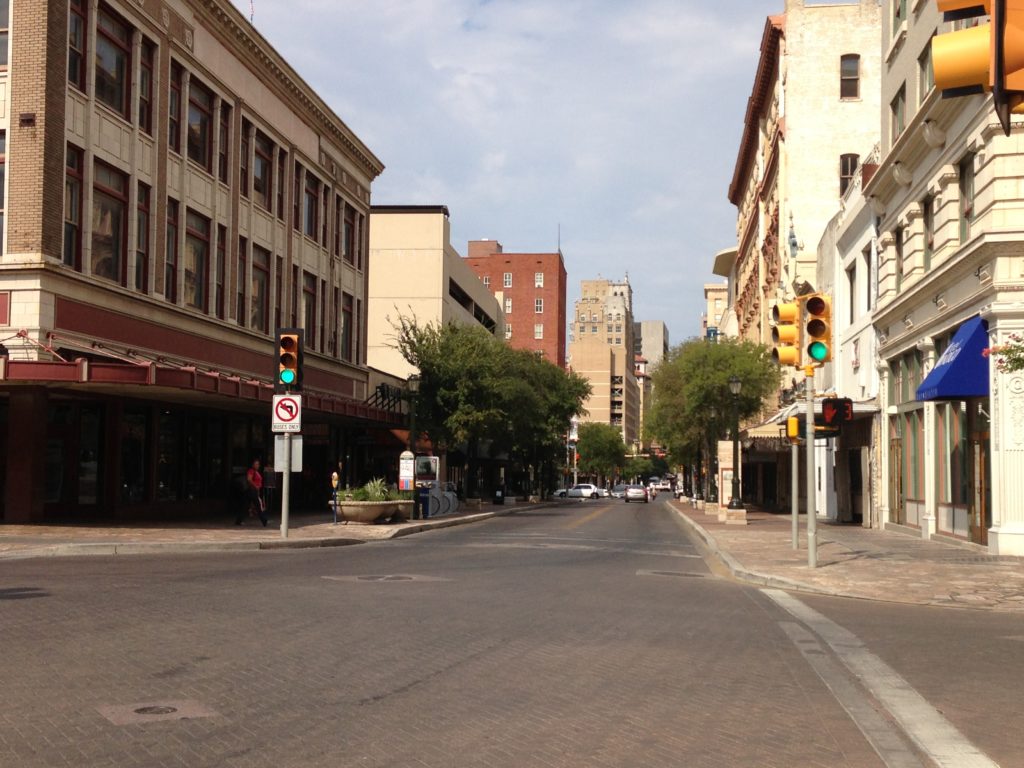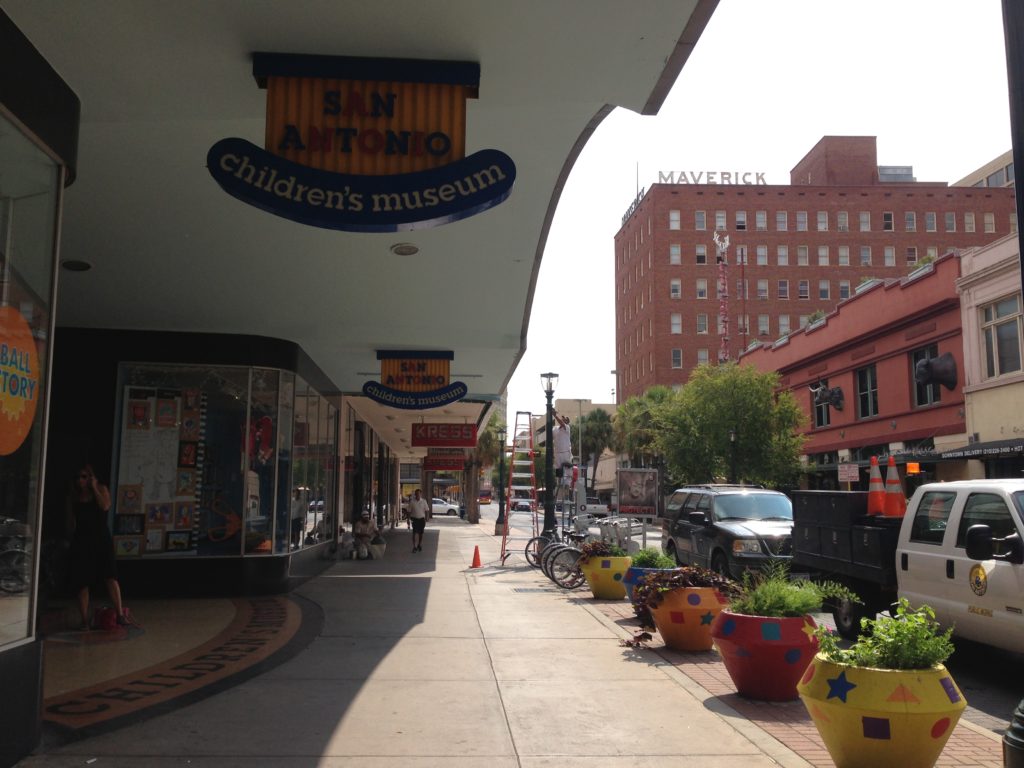By Hannah Monroe, SA2020 Neighborhoods Liaison at SAHA
Post 2 | Series Archive
As I’ve been working downtown at the San Antonio Housing Authority and interning at First Presbyterian Church, I’ve gotten to take the opportunity to walk to lunch, to the Empire Theatre, and to meetings. Although the Texas summer was hot and it’s still a little toasty this fall, it’s rejuvenating to soak in that Vitamin D and spend some time outside. At first thought, walkability may sound like something small, but it is linked to things much larger than just walking around.
Technically speaking, walkability includes many different elements: sidewalk quality, proximity to businesses and other amenities, how far you have to travel to access those amenities, etc. A walkable neighborhood is one that is safe, has access to services needed for daily life, and where walking is a positive experience. Walkability also impacts several fields of work like transportation, sustainability, sociology, urban design, and health. Most often people see walkability as only attainable in downtown areas, but there are other neighborhoods (many located inside Loop 410) where walkability is distinctly possible.
There are three major impacts of walkability in neighborhoods:
Walkable neighborhoods promote physical activity and improve health
More than 200 research articles investigating this link between walkability and health have been published, most of which found a real relationship between walkability of a neighborhood and health of the neighborhood’s residents (Talen 2013, 48).
It is not only sidewalks that impact walking in a neighborhood, but also the street patterns and mixed land use (where businesses, houses, and retail are located in the same space). Interestingly, the perception of walkability in a neighborhood can impact walkability just as much as the actual infrastructure. As people’s perceptions of walking in their neighborhood improve, they will begin to walk more, even if the infrastructure hasn’t changed.
Walkable neighborhoods add economic value
In places where there is density, mixed-use, and “pedestrian infrastructure” like sidewalks, the property values tend to be higher. People that live in walkable neighborhoods pay lower costs for transportation and this ties into Neighborhood Cost (another SA2020 Neighborhoods indicator). Costs are lower in walkable neighborhoods so people can shift their spending to other aspects of life.
Walkable neighborhoods impact social connections
Walkability also allows individuals to get to know their neighborhoods, neighbors, and creates a sense of community. It allows for more social interaction, especially if a neighborhood has a well-designed space for gathering.
Regularly interacting with neighbors can greatly impact feelings of community safety. For example, Walk and Talks were started at Lincoln Heights and Cassiano Homes by residents and community organizers with support from SAHA. These groups of people walked around their neighborhood together to take a proactive stance on facing crime in the neighborhood. By walking and inviting anyone they encountered, the Walk and Talks increased social connections between neighbors.
The Final Say
Even though walkability impacts us in these three major areas, less than 10% of people in the U.S. live in walkable neighborhoods. It’s also easier to discover assessments of walkability in our own neighborhoods than you might think. There are companies like Walkscore that rate neighborhood walkability and are refining their measurements to better reflect the reality of walking in those neighborhoods.
What you can do?
Since Walkability impacts so many aspects of our lives, what can we do to increase walkability in our own communities? Although walkability is largely based on the sidewalks and road conditions, there are things that we all can do, like promoting walking in our neighborhoods to impact the perception of walkability and advocating for different road conditions.

Nothing quite like walking downtown on a lovely day.
Get to Know Your Neighborhood
It’s difficult to know what you can walk to if you don’t know your neighborhood. Spend one day a week exploring 15 minutes in one direction or map out a walking path using http://www.mapmywalk.com/ or another mapping website. Take note of grocery stores, sidewalk conditions, streets that are enjoyable to walk along. You might be located in a neighborhood that’s already pretty walkable, but you have to go outside to figure it out.
Find Others to Join You
Walking in your neighborhood can be more enjoyable if you have someone to join you. So invite your family, friends, or neighbors to walk with you! Take turns deciding the walking route. Maybe you’ll get to know your neighbors better.
Share Your Stories
An integral part of mobilizing others toward change is sharing personal stories—so share yours! If there is an area where the sidewalks are not kept up or there are vacant lots, mobilize within your community to advocate for change. If you have a walking experience that transforms your views on walking or walkability, share it. Make a point to talk to others about your walking experiences and send us your stories at SA2020@saha.org.
Happy Walking!



